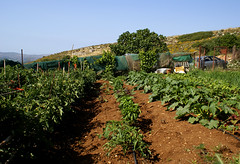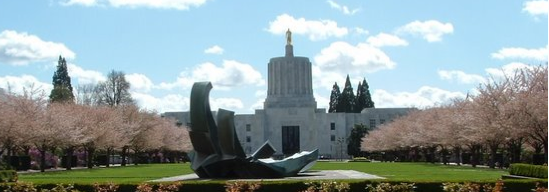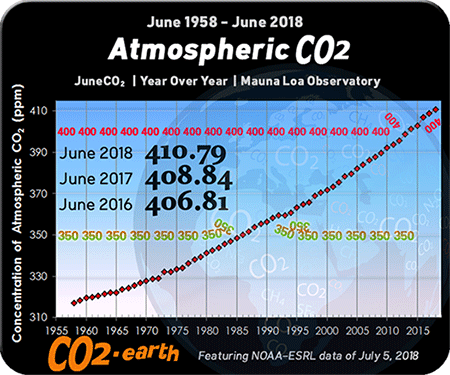 We can grow an abundance of premium vegetables for health and flavor right here in Salem! Image by agelakis via Flickr
We can grow an abundance of premium vegetables for health and flavor right here in Salem! Image by agelakis via Flickr
Kathleen Merrigan was deputy secretary of agriculture for only a month when she sat for an interview with Kimberley Hodgson, manager of APA's Planning and Community Health Research Center. Before signing on with the federal government, Merrigan taught at Tufts University and was director of the Agriculture, Food and Environment program at the university's Friedman School of Nutrition Science and Policy. She holds a doctorate in environmental planning from MIT
Q In light of your background, what specific steps do you suggest that planners take to improve the US. food system?A: Planners have a large role to play. [Here is the context.] I've just been given the challenge by the president and the secretary of agriculture, Tom Vilsack, to lead USDA's local and regional food systems initiative, which we're calling Know Your Farmer, Know Your Food. There's a lot of enthusiasm for this initiative. There are a lot people who are excited again about agriculture; food policy councils are starting up all over the country. That's great, but when I sit at my big desk here on the Mall, I am struck by the complexity of the challenge before me. Reinvigorating local food systems is a structural challenge of great magnitude.Q In honor of Earth Day 2009, Vilsack declared the entire grounds at the USDA Jamie L. Whitten Building as the "People's Garden" and unveiled plans to create a sustainable landscape on the grounds. In what tangible ways will the USDA support urban agriculture for commercial and noncommercial purposes nationwide?
So where do planners come in? The planning profession [encourages] people to grapple with those complexities, to see how the interconnected parts fit together. I hope that planners across the country embrace the public fervor for local food and help communities figure out what can be done. Given the unique needs and the various characteristics of a community, there is no one-size-fits-all solution. My job here in Washington is to figure out what barriers might be in place, some of them government-constructed barriers, and figure out how to tear them down.A The inauguration of the People's Garden was my first public appearance. . . . We thought it was a great opportunity to take the little bit of land we have left here at USDA headquarters and set up a demonstration garden for people to see fruits and vegetables being grown, to talk about healthy eating, to talk about organic agriculture. And we are going to expand what's there now to use the entire area for ecological landscaping. We are [also] challenging all USDA facilities both in the US. and at our various overseas operations to come up with their own versions of the People's Garden.Q Do you think there is a role for urban agriculture in our urban centers?
That's just one thing, though. We are trying to bring kids back into agriculture because there is evidence that children do better in science and have greater ecological sensibilities because of gardening experiences-and they consume greater quantities of fruits and vegetables.A: Absolutely. It's a great opportunity not only for healthy diets, but to strengthen communities. In some cases urban agriculture has helped fight crime, reconnect people through common activity, and bring families together.Q How will the USDA support urban agriculture?A: I don't think we received a complete road map during my first month on the job, but we can engage people in the conversation about seasonal variety and supply, and we should understand more about markets. If I'm an urban consumer, is it better to drive 20 miles to pick up my share of produce at a CSA [Community Supported Agriculture] farm, or is it better to go to the Stop and Shop only two miles away? [Or is it even better to preserve precious farmland WITHIN the city limits? --- LOVESalem]Q President Obama has emphasized the need to improve the health care system. What new farm or food initiatives (and funding) may emerge as part of that focus?
Sometimes these issues are reduced to very simplistic equations like food miles. Food miles have been a great way to bring people to the conversation, but if we really want to do something about [sustainable food systems],we have to embrace the complexity. Again, complexity is the key to all of this.A: The president and Mrs. Obama are clearly very interested in healthy eating and very concerned about the childhood obesity epidemic. The first lady has her own garden on the lawn of the White House, which is prominently displayed for everyone to see. They even have a beehive. . . .Q: Assuming you agree that the U.S. food system should be fair, healthy, and sustainable, what is your vision for getting there?
From where I sit as deputy secretary (and it's lovely to have this chair because I have the opportunity to think about reprogramming, reallocating, reprioritizing), I would be very uncomfortable going to Congress and asking for some big new money. I first have to convince myself that we've done everything we can with what we have. Just today, I sent out a memorandum to all USDA agencies to help me better understand the inventory of programs that are already facilitating local and regional food systems. And I'm establishing an interagency task force (that I'll chair) on the Know Your Farmer, Know Your Food initiative. What we want to do is think out of the box, be strategic, and think across all 26 of the USDA agencies.A: I guess if had to pick one word, it would be diversity. Diversity in terms of the kinds of foods. (Our genetic stock is becoming too uniform, and that makes me nervous. And it means that we are missing out on lovely, traditional heirloom crops.) Diversity of farm types and farm sizes. I want farms in all regions. (I've long been a champion of organic farmers, but I don't see the world going 100 percent organic. It's not the right fit for everyone.)
Diversity in the voices at the table when key agricultural decisions are made. [Like the proposal to lock agriculture out of rich river bottom land that has been farmed for 150 years is being considered. -- LOVESalem] That's what's so exciting about this resurgence of interest in agriculture. That's what's always drawn me to agriculture-trying to get some of the important voices amplified.

![Reblog this post [with Zemanta]](http://img.zemanta.com/reblog_e.png?x-id=967b7ff3-06cb-42e2-abcd-407161b8a85a)




No comments:
Post a Comment